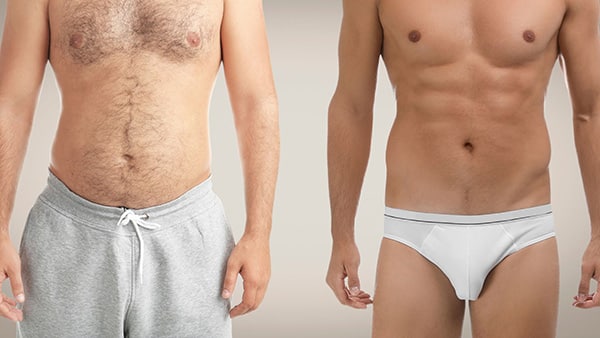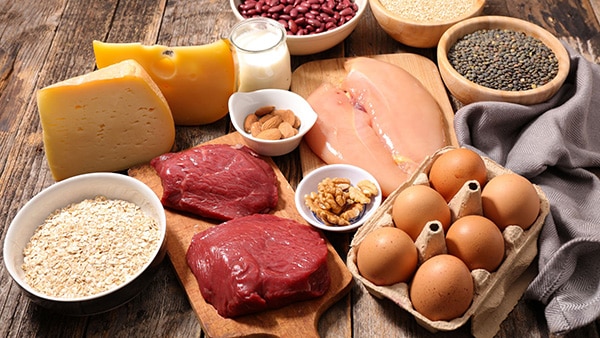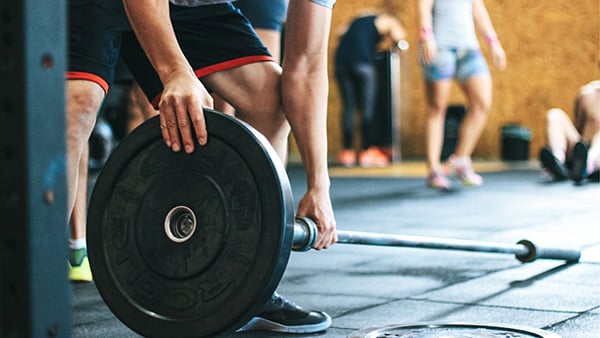Lose fat and gain muscle at the same time? What if I told you it was possible? That's exactly what a body recomposition. Unlike a conventional diet, this approach does not aim to lose kilos. Rather, it seeks to rebalance the ratio of dry mass to fat mass. Find out more about body contouring in this article.
Understanding body recomposition
What is body recomposition?
Body recomposition is a method whose objective is to gain muscle and lose fat at the same time.
To better understand this concept, it is essential to know what the body composition. The latter simply refers to the various elements of which your body is composed, including muscle mass and fat.
Recomposition, on the other hand, focuses on modifying body composition by developing the lean body mass and limiting body fat.
Of course, it's not technically possible to lose fat and gain muscle at the same time. You can, however, combine the two over a period of several weeks to several months.
Is body recomposition different from weight loss?
Traditionally, a diet is to reduce caloric intake in order to lose weight. This weight loss is always accompanied by a muscle wastingas shown by this 2018 study conducted by American researchers.
To measure the effectiveness of a diet, it is necessary to weigh yourself on the scale or calculate your BMI (Body Mass Index). However, simply keeping track of your weight is not a reliable indicator of how healthy you are.
To illustrate this, let's take the example of two men with exactly the same same measurements 1.80 metres for 85 kilos. The former may well have a body fat percentage of 12 %, while the latter's body fat is more likely to be around 20 %. It's not a question of weight, but rather of body composition and body fat. body fat percentage.

In other words, it's possible to weigh a lot and be muscular, just as it's possible to be light with very little muscle. The difference is often obvious in the abdominal muscles, which are more or less visible depending on the presence of body fat.
Unlike a conventional diet, body contouring works on body composition, not just weight. It reverses the fat-to-muscle ratiowhile maintaining your current weight.
Who can benefit from body recomposition?
A number of studies have examined the process of body recomposition, sometimes with conflicting results.
Overall, the researchers found that its effects were very limited in sportsmen already trained. On the other hand, this process offers visible results for those whose fat content is high.
A logical observation, given that the body composition of athletes is already heavily weighted in favour of muscle mass.
As a result, body recomposition is aimed more at :
- To beginners in bodybuildingand more generally to non-athletes;
- People who have stopped playing sports for several years;
- For all those whose body fat/muscle mass ratio is unfavourable.
If you are in aobesityIn any case, it's best to consult a healthcare professional before taking the plunge.
Let's now take a look at how to achieve a successful body recomposition, through its three main pillars:
- Nutrition
- Physical activity
- Sleep
5 steps to successful body recomposition
Step 1: Know your caloric needs
Losing body fat while preserving muscle means knowing exactly how much you need to lose. calorie requirement.
You'll need to take an interest in your basal metabolic rateThis is the energy your body needs to function when at rest. This data will then help you determine your maintenance calories, taking into account your activity level.
To do this, you can get out your calculator and apply formulas like the Mifflin St Jeor equation, or simply use the free calculator available on my website.
Step 2: Adopt a healthy and balanced diet
The success of your body recomposition depends largely on the quality of your food program.
In a classic diet, all you have to do to lose weight is consume fewer calories than you burn. This is known as caloric deficit.
But as we've seen, slimming down inevitably leads to a loss of weight. loss of muscle mass. And this is precisely what we're trying to avoid with body recomposition.
To achieve this, you must alternate between phases of slight deficit, maintenance and caloric surplus depending on your training:
- On days when you're exercising or working out workout caloric surplus of about 10 % ;
- On days when you're cardio : caloric maintenance ;
- The days of rest deficit of around 10 %.
And, of course, it's just as important to make sure you have a protein intake sufficient to limit muscle loss. Count on between 1.8 and 2.2 grams of protein per kilo of body weight. Conversely, limit fat intake and make sure you eat enough carbohydrates for energy.

DISCOVER MY E-BOOK OF RECIPES
Step 3: Work out
In addition to what you eat, it's also essential to stick to a balanced diet. resistance training. In other words, you need to work outtwo or three sessions a week.
For best results, incorporate as many basic exercises as possible into your weight-training program :
- Bench press
- Pulls
- Military developed
- Deadlift
- Pumps
- Squat
- Slots
These movements involve several muscle groups. They are therefore excellent for developing your musculature.
And what about cardio?
High-intensity cardio training will help you burn calories. But don't overdo it, or you'll lose muscle.
Step 4: Get a good night's sleep
The sleep is a factor not to be neglected by bodybuilders, both in terms of quantity and quality.
In fact, sleep deprivation has a direct impact on the muscular growth. According to an American study published in 2010The effects on fat loss and muscle gain are considerable.
To achieve your goal, make sure you go to bed early and look after your health.
Step 5: Track your results
Of course, it is essential to track your progress.
To do so, measure your body fat percentage from the outset, using skinfold forceps or an impedance meter, then take it at regular intervals.
I would like to remind you that the aim of a body recomposition is not to lose weight. It's the distribution between body fat and muscle that's important, not the number of kilos on the scale. So it's perfectly normal not to see any results when you weigh yourself.
I also advise you to take photos of yourself from the front, profile and back, as this is the best way to see your evolution.
In all cases, bear in mind that body recomposition is a process that takes time. Depending on your initial physical condition, you should expect to spend between 2 and 6 months to see real physical changes.
Conclusion
Now you know all about body contouring! This approach is based on a few key principles: alternate cycles of caloric surplus and deficit, consume sufficient protein every day and practice weight training. In this way, you'll be able to remove fat while gaining muscle.








